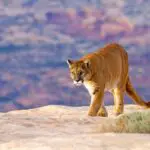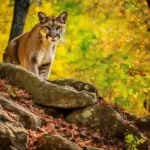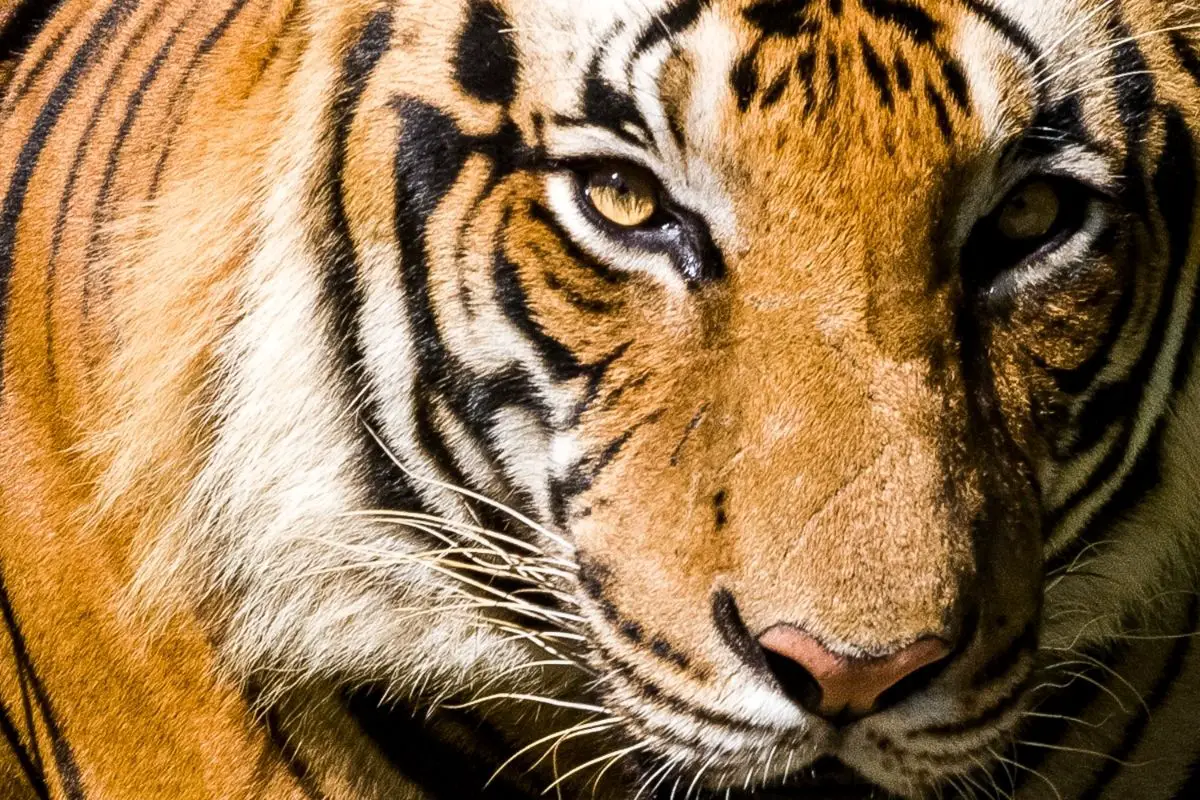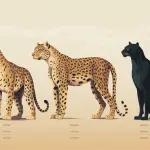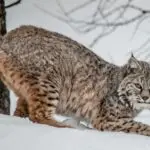Missouri is home to a variety of wildlife species, including the elusive and fascinating bobcat. These wild cats are known for their distinctive spotted coats and short tails, and they can be found throughout the state in a variety of habitats. While bobcats are an important part of Missouri’s ecosystem, they can also pose a danger to humans and pets if they become too comfortable around people.
Conservation efforts are critical to ensuring that Missouri’s bobcat population remains healthy and sustainable. The Missouri Department of Conservation is responsible for managing the state’s wildlife resources, including bobcats, and works to protect these animals through a variety of programs and initiatives. These efforts include monitoring bobcat populations, enforcing hunting and trapping regulations, and educating the public about the importance of respecting wildlife and their habitats. By working together, we can help ensure that Missouri’s bobcats continue to thrive for generations to come.
The Missouri Bobcat Population
Missouri is home to a diverse range of wildlife, including the bobcat. The Missouri Department of Conservation has been monitoring the state’s bobcat population for many years, and the latest data shows that the population is stable.
Population Size
According to the Missouri Department of Conservation, the estimated population size of bobcats in Missouri is between 5,000 and 7,000 individuals. The population has been growing in recent decades, thanks in part to conservation efforts and habitat restoration projects.
Habitat
Bobcats in Missouri are typically found in forested areas, but they can also be found in grasslands and wetlands. The habitat requirements for bobcats are relatively simple – they need cover for hiding and hunting, and they need prey to eat.
Unfortunately, the habitat for bobcats in Missouri has been greatly reduced in recent years due to hardwood forest clearing and draining of lowlands. Despite this, populations seem to be stable, thanks in part to conservation efforts and habitat restoration projects.
To preserve the population of these wild cats, Missouri has put in place strict regulations regarding bobcat hunting within its borders. These regulations include limits on the number of bobcats that can be harvested each year, as well as restrictions on the methods used to hunt them.
In conclusion, the bobcat population in Missouri is stable, but there is still work to be done to preserve their habitat and ensure their long-term survival. By continuing to monitor the population and implement conservation efforts, we can help ensure that these beautiful animals continue to thrive in the wilds of Missouri.
Conservation Efforts
The Missouri Department of Conservation (MDC) is responsible for the conservation of the state’s wildlife, including the bobcat. The MDC works in collaboration with wildlife biologists and the Missouri Conservation Commission to ensure that bobcats are protected and their populations remain stable.
Missouri Department of Conservation
The MDC has been actively involved in the conservation of bobcats for several years. They have implemented several programs to protect the bobcat population, including monitoring and research programs, habitat restoration, and public education programs. The MDC also regulates the hunting and trapping of bobcats to ensure that their populations remain stable.
Wildlife Biologists
Wildlife biologists play a crucial role in the conservation of bobcats. They conduct research to understand the bobcat’s behavior, habitat requirements, and population dynamics. This information is used to develop management plans that ensure the long-term survival of the species. Biologists also work with landowners to implement habitat management practices that benefit bobcats and other wildlife.
Trapping Seasons
The Missouri Conservation Commission sets the trapping seasons for bobcats. The trapping season for bobcats in Missouri typically runs from November through January. During this time, licensed trappers are allowed to trap bobcats using specific methods and equipment. The trapping season is closely monitored to ensure that the bobcat population remains stable.
The MDC also requires trappers to report their catch to the department. This information is used to monitor the bobcat population and to adjust trapping regulations as necessary.
Overall, the conservation efforts for bobcats in Missouri are a collaborative effort between the MDC, wildlife biologists, and the Missouri Conservation Commission. Through research, monitoring, and public education programs, the bobcat population in Missouri is expected to remain stable for years to come.
Bobcat Behavior and Diet
The bobcat is a solitary and territorial animal that is active throughout the year. They are primarily nocturnal, but can also be active during the day, especially during the winter months. Bobcats are opportunistic predators that feed on a variety of prey, including small mammals, birds, and reptiles.
Prey
Bobcats are known to hunt a variety of prey, including rabbits, hares, squirrels, voles, birds, and more. They are also known to feed on larger prey, such as deer, when available. Bobcats are skilled hunters and can catch prey that is much larger than themselves.
Hunting
Bobcats are ambush predators that rely on stealth and surprise to catch their prey. They are known to stalk their prey and pounce on them from a distance of up to 10 feet. Bobcats are also known to climb trees to catch prey, such as birds and squirrels.
Active Times
Bobcats are primarily nocturnal, but can also be active during the day, especially during the winter months. They are most active during the twilight hours, which are the hours just before sunrise and just after sunset.
In conclusion, the bobcat is a skilled predator that feeds on a variety of prey. They are primarily nocturnal, but can also be active during the day, especially during the winter months. Bobcats are ambush predators that rely on stealth and surprise to catch their prey, and are known to climb trees to catch prey such as birds and squirrels.
Bobcat Trapping and Hunting
Bobcats are a popular game animal in Missouri and can be hunted and trapped during the open season. Here are some important things to keep in mind when trapping and hunting for bobcats.
Traps and Snares
Trapping is a common method used to capture bobcats. Traps and snares must be set in accordance with Missouri trapping regulations, and a special-use permit is required to trap on conservation areas. Traps must be checked daily, and any captured bobcats must be reported and registered.
Dog-proof style and other traps are allowed on many conservation areas. Contact the area manager at the regional office to see what opportunities are available in your area.
Hunting Season
The bobcat hunting season in Missouri runs from November 15, 2022, to February 28, 2023. A small game license is required, and there is no bag limit.
Hunting for bobcats can be challenging, as they are elusive and nocturnal animals. Successful hunters often use calls to attract bobcats and hunt in areas with high bobcat populations.
It is important to note that hunting and trapping regulations are subject to revision during the current year. Refer to the Wildlife Code for the most up-to-date information.
In conclusion, trapping and hunting for bobcats in Missouri requires knowledge of regulations and methods. By following the rules and using effective techniques, hunters and trappers can enjoy a successful and rewarding experience.
Bobcats and Other Wildlife
Missouri is home to a diverse range of wildlife, including the elusive and majestic bobcat. However, bobcats are not the only creatures that call Missouri home. In this section, we will take a closer look at some of the other wildlife that can be found in Missouri and how they interact with humans.
Coyotes, Raccoons, and Opossums
Coyotes, raccoons, and opossums are three common wildlife species that can be found in Missouri. While they may seem harmless, these animals can pose a threat to pets and livestock. Coyotes, in particular, have been known to attack small dogs and cats.
It is important to take precautions to protect your pets and livestock from these animals. This can include keeping pets indoors at night, securing garbage cans, and using fencing to keep livestock safe.
Birds and Small Mammals
Missouri is home to a wide variety of birds and small mammals, including squirrels, chipmunks, and rabbits. While these animals may seem harmless, they can cause damage to gardens and crops.
If you are experiencing problems with these animals, there are a few steps you can take to deter them. This can include using bird netting to protect crops, planting certain types of plants that are less appealing to wildlife, and using humane traps to relocate animals.
Pets and Livestock
It is important to keep pets and livestock safe from wildlife. This can include keeping pets indoors at night, securing garbage cans, and using fencing to keep livestock safe.
If you do encounter wildlife on your property, it is important to keep a safe distance and avoid approaching the animal. If you are experiencing problems with wildlife, there are resources available to help. The Missouri Department of Conservation offers a variety of resources and information on how to deal with wildlife issues.
In conclusion, Missouri is home to a diverse range of wildlife, and it is important to take precautions to protect pets and livestock from potential threats. By taking steps to deter wildlife and seeking help when needed, we can coexist peacefully with the wildlife that calls Missouri home.
Urban Bobcats
Bobcats are not just found in rural areas. They are increasingly being spotted in urban areas as well. This can be attributed to the shrinking of their natural habitat and the expansion of human settlements. In this section, we will discuss the presence of bobcats in urban areas and the measures that can be taken to prevent any conflicts.
Bobcats in City Limits
Bobcats are known to inhabit areas with dense vegetation, and urban areas with parks, green spaces, and wooded areas provide them with suitable habitats. They can also be found in residential areas where they prey on small animals such as rabbits, squirrels, and rodents. In 2022, a photographer captured footage of two large bobcats on the porch of a house in Lee’s Summit, Missouri. The Carver Middle School also reported a sighting of a bobcat roaming around its premises.
Preventing Conflict
While bobcats are not known to attack humans, they can become aggressive if they feel threatened or cornered. To prevent any conflicts, it is important to take some precautions. Here are some measures that can be taken:
- Avoid leaving pet food outside, as it can attract bobcats.
- Keep small pets indoors or supervised when outside.
- Keep porches and patios clean and free of debris, as they can provide hiding places for bobcats.
- Install motion-activated lights or sprinklers to deter bobcats from entering your property.
- If you encounter a bobcat, make loud noises and try to appear larger by waving your arms.
It is important to remember that bobcats are opportunistic and will prey on small cats if given the chance. Therefore, it is important to keep your pets indoors or supervised when outside. By taking these measures, we can coexist with these beautiful creatures in urban areas without any conflicts.
Conclusion
In conclusion, the Missouri Department of Conservation has taken significant steps to protect the bobcat population in the state. By implementing regulations on hunting and trapping, as well as conducting research and monitoring, the department has ensured that the bobcat population remains stable and healthy.
The department has also worked to protect the habitat of the bobcat and other wildlife in Missouri. By acquiring and managing land, as well as working with private landowners to implement conservation practices, the department has helped to preserve the natural resources that the bobcat and other species depend on.
While the bobcat is a secretive and elusive animal, it is an important part of the ecosystem in Missouri and the United States. As a top predator, the bobcat helps to control the populations of smaller animals such as muskrats and river otters, and plays a vital role in maintaining a healthy and balanced ecosystem.
The department has also made efforts to educate the public about the bobcat and other wildlife in Missouri through social media platforms like Twitter and Facebook. By promoting responsible behavior and respect for wildlife, the department is helping to ensure that future generations can enjoy the natural beauty and diversity of Missouri.
Overall, the Missouri Department of Conservation’s efforts to protect and conserve the bobcat and its habitat are commendable, and serve as an example of responsible wildlife management. All rights reserved.
- Sink Your Teeth Into This: Analyzing the Powerful Lion Bite Force - September 8, 2023
- Siberian Tigers: Everything You Need To Know - September 4, 2023
- Do Lions Eat Humans? Understanding Lion Aggression and Risks - September 4, 2023




